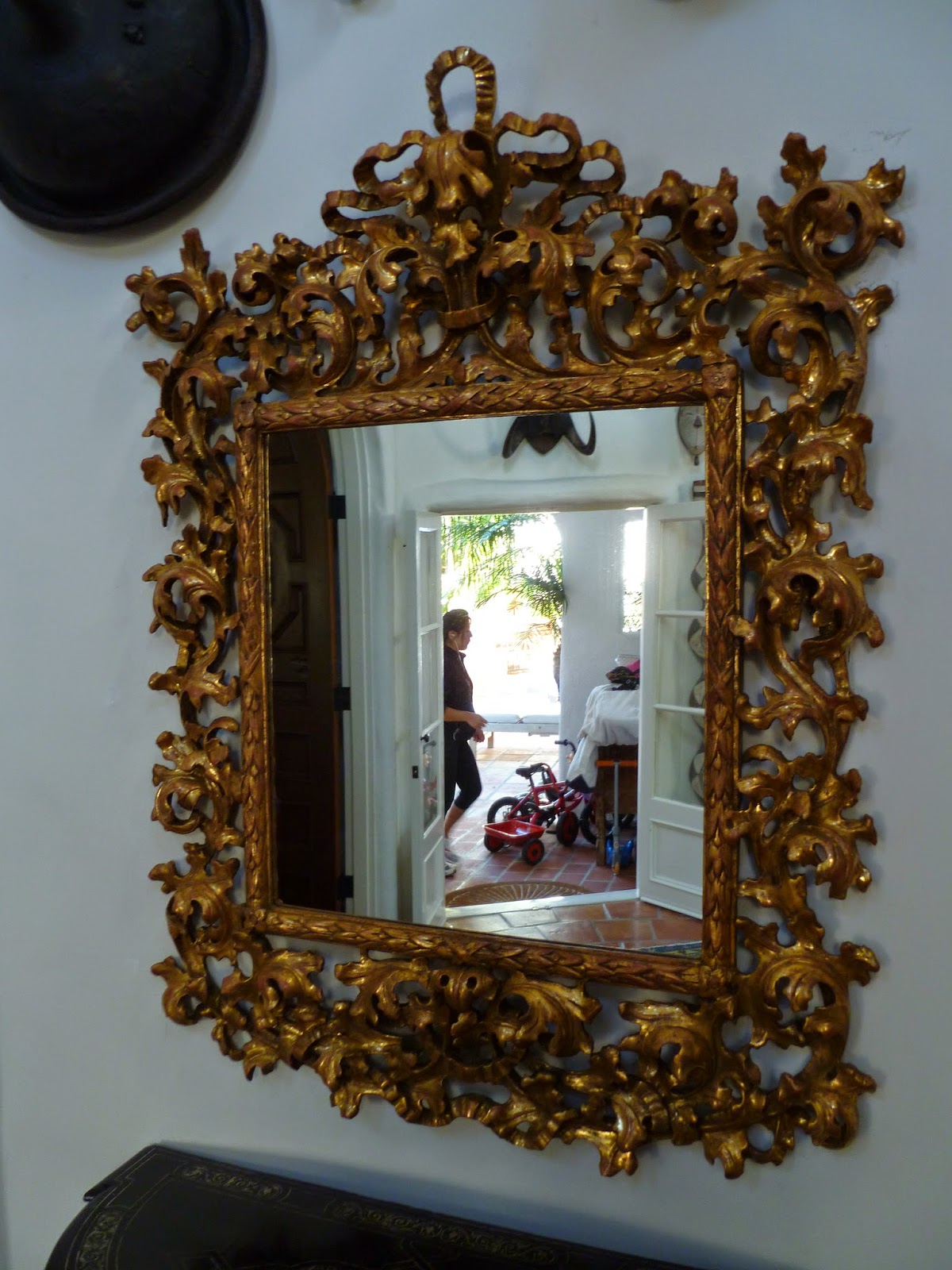- admin
- Jul, 01, 2013
- Gilding, Restoration
- No Comments
A year ago one of our clients sponsored our business Antique Refinishers in San Diego to sent me to learn gilding.
Coming back form Portland, Oregon where I learn with Nancy Thorn I started on a restoration on a frame from our client. The mirror had been “restored” with gold paint over the giding on 50% of the frame.
After cleaning the paint I saw the frame needed re gilding.
After striping the whiting is applied, it is a mix of rabbit skin glue, water and calcium carbonate. After several layer the Whiting is water sanded or leveled with a damp rag.
On top of the whiting you apply the bole made of clay, rabbit skin glue and water.
Yellow ocre first, it will hide some of the gold cracking in the recess.
Next step is to put the colored bole if any. In that case it is an italian red.
Next step is actually the gilding. To make gold leaf, the gold has been hammered down until it is so thin you can see light through the leaf. The leaves are extremely fragile on top of being extremely expensive.
The surface is just wet with a brush called a mop, the water reactivate the stickiness of the glue and the clay.
The gold leaf is then applied held by static electricity and a tiny bit of vaseline or sweat on a squirrel gilder brush and is literally sucked down by the water.
Here is a short bad video we made, sorry for the bad quaity.

The best is to get the cat to help you to push the gold in place
The next step is to burnish the area where you want the gold to be really bright and shiny with an agate stone burnisher, in this case the all mirror. Different agate shapes are required .

Then depending on the client, more or less ware on the high points, more or less bings and bangs, and more or less patina. For this client, a lot of ware and heavy patina.
Here are finally the final pictures. it does not do exactly justice to the mirror, there is more of a subtle shine on the gold surface.

